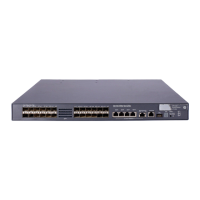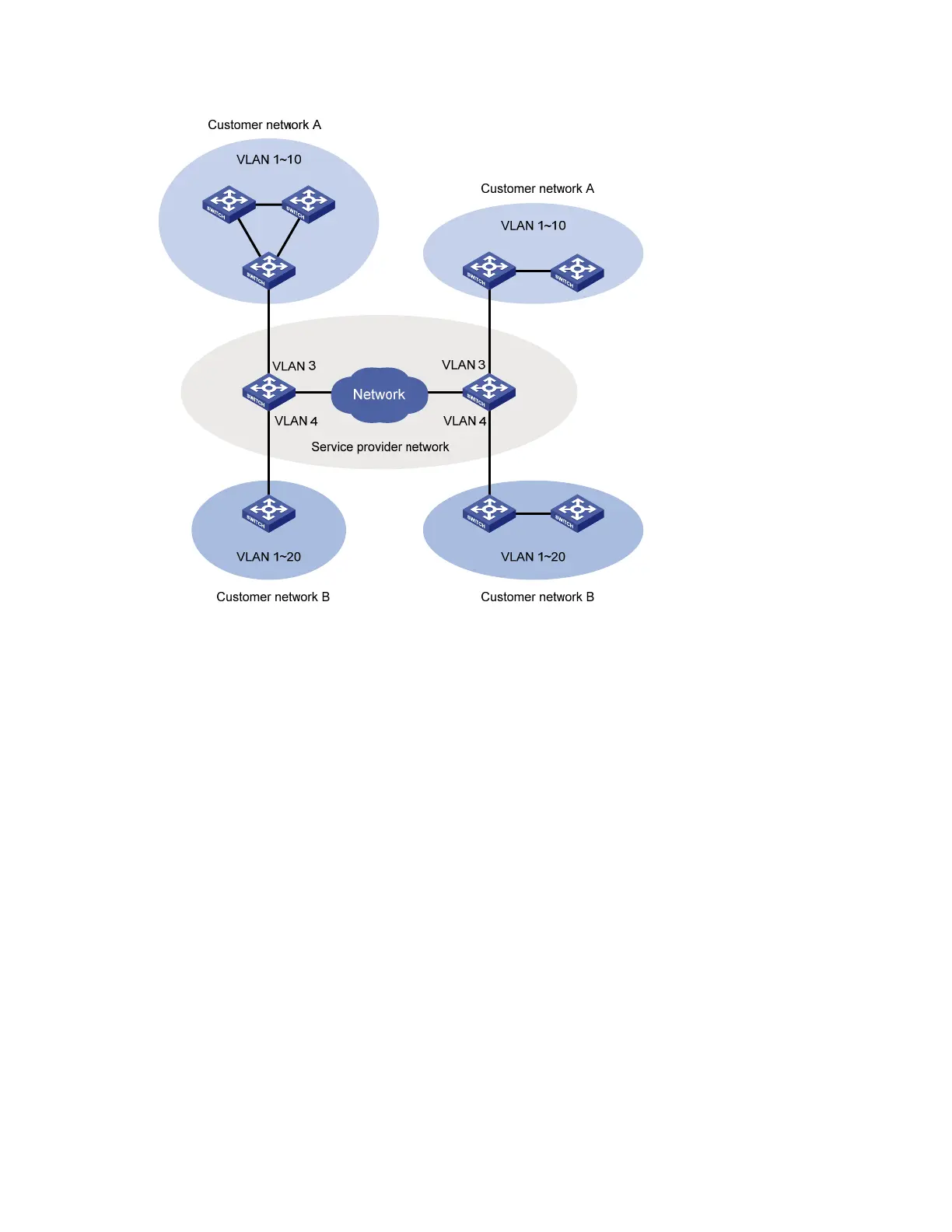162
Figure 53 Typical QinQ application scenario
As shown in Figure 53, customer network A has CVLANs 1 through 10, and customer network B has
CVLANs 1 through 20. The service provider assigns SVLAN 3 for customer network A, and SVLAN 4 for
customer network B. When a tagged Ethernet frame from customer network A arrives at the edge of the
service provider network, the edge switch tags the frame with outer VLAN 3. When a tagged Ethernet
frame from customer network B arrives at the edge of the service provider network, the edge switch tags it
with outer VLAN 4. As a result, no overlap of VLAN IDs among customers exists, and traffic from different
customers can be identified separately.
QinQ frame structure
A QinQ frame is transmitted double-tagged over the service provider network. The inner VLAN tag is the
CVLAN tag, and the outer one is the SVLAN tag that the service provider has allocated to the customer.

